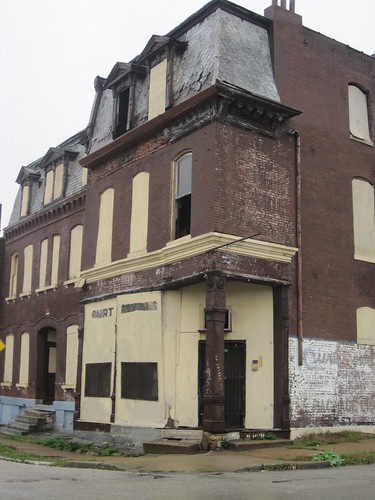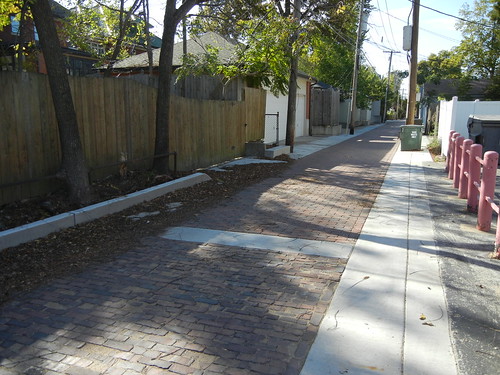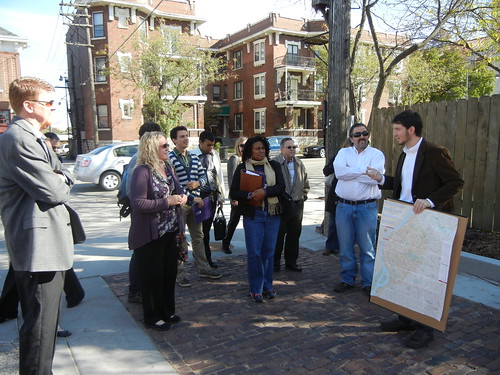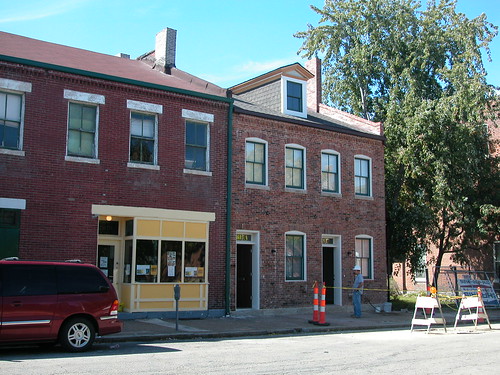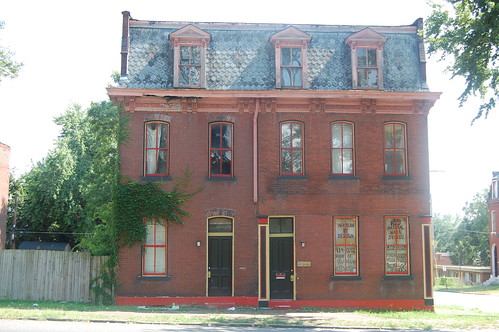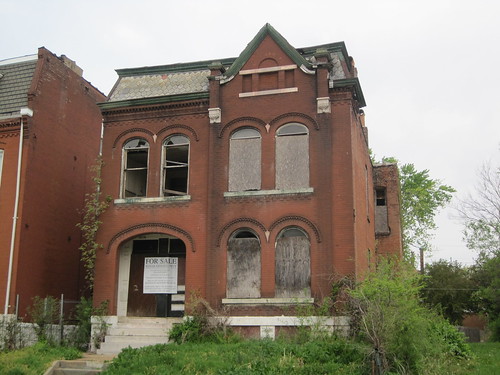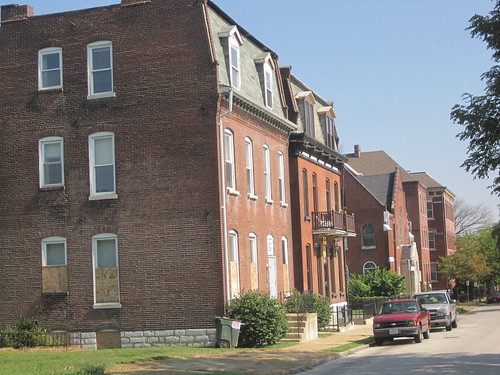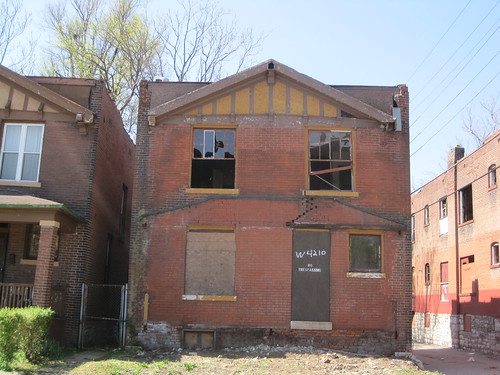by Michael R. Allen
Last week, St. Louis Place lost one of its few remaining corner commercial buildings to a fire. The vacant three-story building at the southeast corner of 20th and Warren Streets was deteriorating, and had recently shown signs of a failing I-beam over the storefront. Still, the fire and the totality of destruction were startling. This was the end point of a street wall that was largely intact, so the hole is starkly apparent.
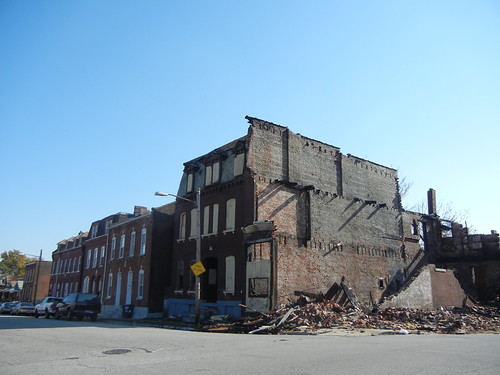
The adjacent four-family building survived. Both of these buildings were built circa 1890, and were fairly typical vernacular masonry buildings. The corner building, with its partially mansard-roofed third floor, galvanized cornices, foundry-bought iron columns and chamfered store entrance was not unique to the neighborhood, the north side or the city. Yet in an age when there were dozens of this type of building in this neighborhood, instead of less than a dozen, its fate would not have been noteworthy. Nowadays, its loss inflicts a huge blow to the neighborhood.
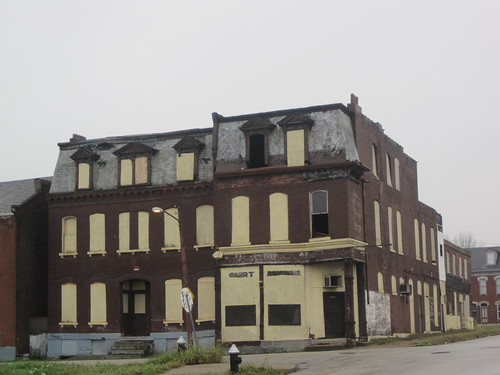
The building was included in the 1986 addition to the Clemens House-Columbia Brewery Historic District, a National Register of Historic Places district first listed in 1984 (see the nominations and maps on this page. At the time of listing, most corner buildings of this type in this part of the St. Louis Place neighborhood were already gone.
The corner storefront was located in the Union Addition, laid out by Col. John O’Fallon and other investors in 1850 — five years before this area would become part of the city of St. Louis. Development was slow in the area south of North Market Street, because the city reservoir was drained in 1871 and its ruins not demolished until 1887. That same year, the Visintandines (headquartered in the Visitation Academy at Cass Avenue and 17th Street) subdivided the land between Mullanphy, 17th, Madison and Hogan streets. Upon removal of the reservoir’s earthen walls, and the platting of four new city blocks on its site, development of buildings along 20th Street (then 17th Street) took off. Additionally, the Columbia Brewery broke ground on its impressive new plant at 20th and Madison Streets in 1890. A streetcar line ran along 20th between Cass and North Market Streets in the middle 1890s, making this area more attractive for corner stores and commercial sites.
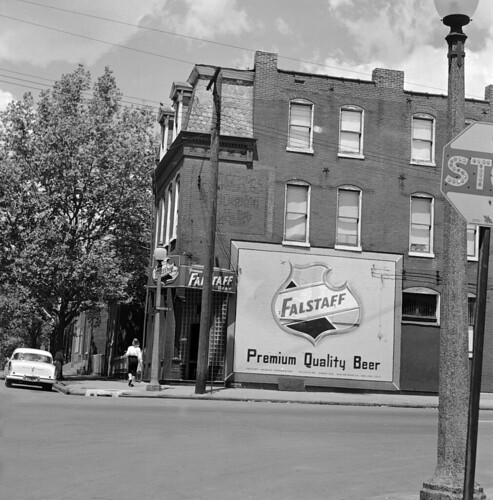
A historic photograph in the collection of the State Historical Society of Missouri likely depicts a corner commercial building at the southeast corner of 20th and Montgomery streets just a block north of the now-lost building. While there are differences in details, the configuration of the storefront and the use of painted advertisements is similar. This photograph dates to 1955, when these buildings and their shopkeepers were essential parts of neighborhood life.
By 1997, the Building Division listed the building at 20th and Warren on its vacant buildings list. Owner Lillian Reeves stopped paying property taxes after 2008, meaning that the building would have soon gone to tax auction. Sadly, a chance at a new life for the building was close at hand.

